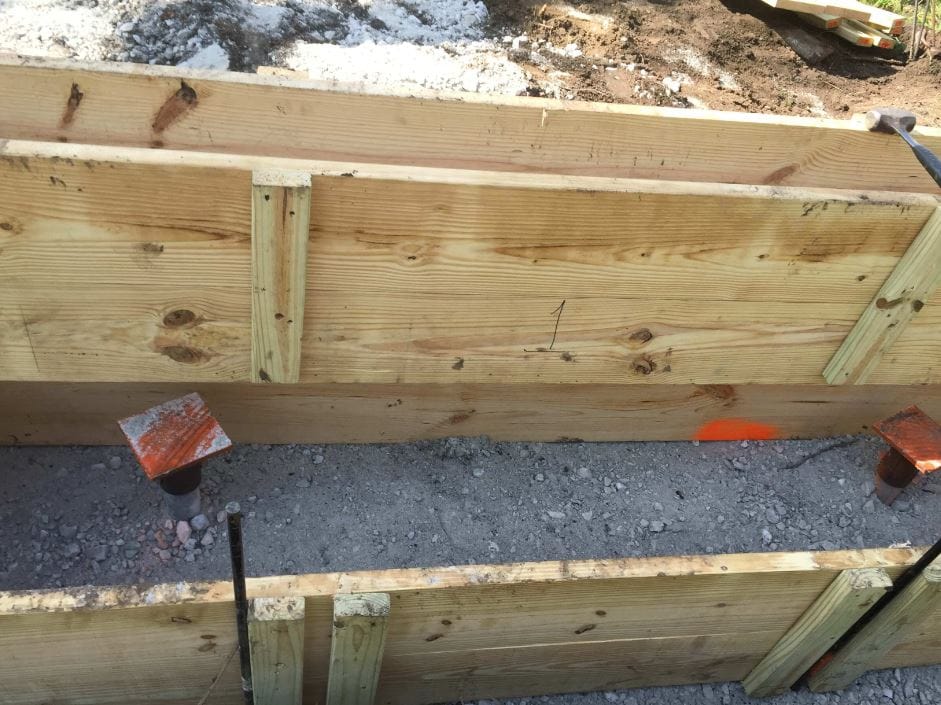What’s the first thing you notice about a bridge? If you’re like most people, you probably notice what it looks like right away. The appearance of a pedestrian bridge is important because it immediately impacts the aesthetic you want to convey to those using it. Whether dramatic, minimalist, modern, or rustic, it’s clearly on display.
Less visible, but just as important are the structural components that make a bridge durable and safe for years to come. Abutments and footers are one such example. In this post, we’ll look at an alternative to traditional footers, called helical piles, and some reasons why they are ideal for pedestrian bridges.
What are Helical Piles?
Think of a helical pile as a giant wood screw. It’s essentially a long, circular shaft made of galvanized steel with helical plates attached at intervals. The plates are fluted and naturally drive into the soil as the pile is turned.
Similar to a screw, as the pile is driven farther into the ground, it becomes more difficult to turn. This is because the torque on the pile increases. As torque increases, so does the pile’s ability to support weight, such as the platform of a pedestrian bridge.
This video shows a helical pile being installed:
Helical Piles vs. Concrete Footers
In traditional bridge construction, soil is excavated in order to pour a concrete footer below the frost line. The footer provides support for the bridge abutment and helps distribute live and dead load from the bridge into the ground. This process involves time and expense for several steps, such as:
- Excavation
- Rebar placement
- Setting concrete formwork
- Mixing and pouring concrete in multiple stages
- Curing time delays between concrete pours
In contrast, helical piles can be driven directly into the soil (without the need for excavation below the frost line) with a Bobcat or other small-scale equipment. As soon as the piles are installed, they are ready to build on and support the abutment load. Using helical piles results in a smaller and lighter abutment because significantly less concrete is required.

Most soil types work well with helical piles; however, extremely rocky soil or the presence of boulders in the ground are limiting factors. Clay and other soil types do not pose a problem.
Helical piles are well-suited to smaller bridges that are designed for foot traffic, and spans of about 100 feet or fewer. Larger vehicle bridges must support much higher loads; therefore are not typically constructed with helical piles.
Concrete footers are susceptible to frost heaving and must be excavated and installed at a depth below the frost line. Helical piles are typically installed ten to twenty-five feet below the frost line allowing the abutment to be poured at ground level.
What Advantages do Helical Piles Offer?
Despite being ideal for all types of pedestrian bridges, helical piles are not a widely known technology, even among those familiar with construction. Some advantages include:
- Quick installation. Helical piles are driven into the ground in a single step without prior digging or concrete formwork needed. They take about 30 minutes each to install and they’re ready to use as soon as they’re installed, so construction can proceed without delay.
- Lower cost. This method uses less rebar, less formwork, and often half as much concrete. Along with smaller equipment and fast installation it adds up to approximately 30 percent savings over traditional concrete footers.
- Less invasive. Without concrete footers the abutment is smaller, requiring less excavation taking up less of the immediate surrounding area. As a result, there is less disruption to existing vegetation and wildlife.
- Greater adaptability to site conditions. Helical piles can be installed in a variety of weather conditions and ground temperatures, even frozen or wet ground. Because they require relatively small equipment to be driven into the soil, they work well in remote locations and in limited-access sites.
Are you in need of a functional and beautiful pedestrian bridge for your site but not sure where to begin? Please contact us to learn about the options and considerations that count – we’d love to hear from you!


